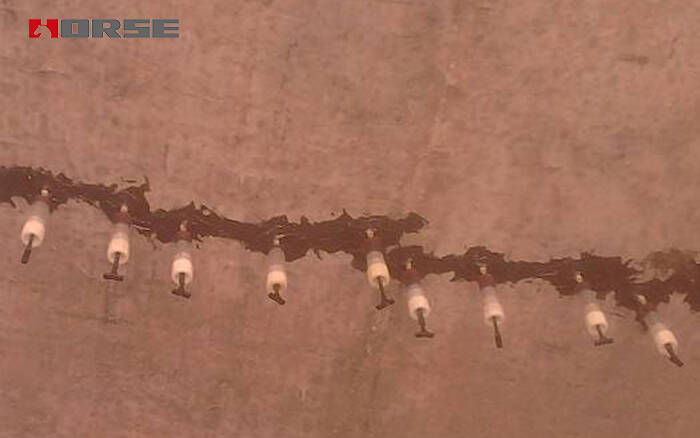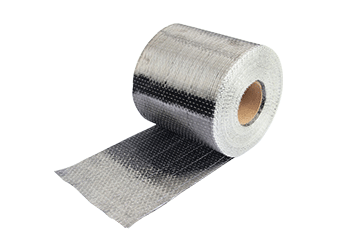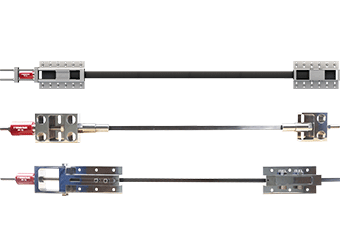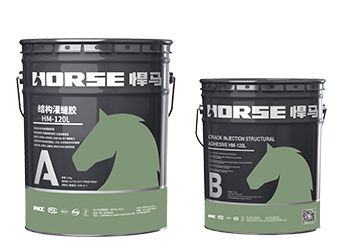Soluciones
La gama de negocios de construcción de caballos se extiende a todo el mundo y sirve a miles de clientes con productos, orientación técnica especializada en construcción, y somos testigos del reinicio de la marca china con ellos.
For cracks in concrete beams with width of 0.2-mm, besides epoxy resin pressure grouting according to the two methods, CFRP is bonded to seal the surface. Reinforced concrete beams are reinforced by CFRP sheets at the bottom of the mid span.

Treatment measures for cracks in plastering layer
Use the cutting machine to cut out the plaster empty drum part, then clean the loose plaster clean and scour out the floating ash with clean water, sweep 108 glue mud on the wall surface and the plastering layer, and smooth out the light by the same marking mortar. Spray water for 7 days. After drying, put 100 wide crack resistant mesh on the old and old plastering, then scrape the elastic putty.
Treatment measures for wall cracks
The method of high strength cement slurry is used in the crack larger than 1.5mm; for the 100 wide plastering layer on both sides of the crack under the crack less than 1.5mm, the base treatment is carried out, and the 100 wide crack proof mesh cloth is attached, and the light is smooth and the elastic putty is used with the same marking mortar.
Treatment measures of floor cracks
The cracks on precast concrete floors are reinforced with carbon fiber sheets at the bottom of precast concrete floors.
The cracks on the surface of the cast-in-place plate are not less than 20mm and 15 mm grooves on the surface of the floor, and the groove width is not less than that of 15 mm. Then the modified epoxy resin material is filled and the carbon fiber composite material is attached to the surface.
Treatment measures for cracks on the beam
1. The crack width is less than 0.2mm, which is a harmless crack. Because of the remarkable self healing capacity of the compensated shrinkage concrete, the two surfaces of the fractured surface can be cemented into one by the expansive hydrate blockage, even in some seepage cracks. Therefore, when the crack width is less than 0.2mm, surface treatment can be carried out. A steel wire brush is used to remove the concrete surface attachments. After rinsing with water, the surface treatment material (elastic coating waterproof material, polymer mortar and so on) is disposed in accordance with the material use description, and the cracks and the surrounding parts are evenly coated.
2. For the deep cracks which are difficult to surface treatment, first chisel the crack into a "concave" groove, clean it with water, then use the cement paste with 10% expansive agent, brush the surface of 1 ~ 2mm on the surface, and then apply 4 ~ 5mm cement mortar after the paste layer is slightly dry. Mix ratio: cement: expansive agent: Sand: water = 1:0.10:2.0: (0.35 ~ 0.38). Finally, 12 hours after compaction, light harvesting and plastering for watering maintenance.
3.The penetrative cracks can be repaired by epoxy resin pressure grouting. At the distance of 2 to 5cm on both sides of the crack, the distance between the cracks is set up and the distance of the injection port is set up. The seaming slurry is made up. After leveling, the cracks are smear along the surface of the crack, the cracks are closed, the injection mouth is left out. The grouting material is inserted into the injection nozzle to press the grouting material into the crack. After 1 days of general injection, the glue will be removed and the surface will be cleaned up after the glue is solidified.
4.For cracks in concrete beams with width of 0.2-mm, besides epoxy resin pressure grouting according to the two methods, CFRP is bonded to seal the surface. Reinforced concrete beams are reinforced by CFRP sheets at the bottom of the mid span.
Puede encontrar cualquier cosa que necesite, confíe en probar estos productos y encontrará la gran diferencia después de eso.

Tejido de fibra de carbono unidireccional de alta resistencia para refuerzo de compuesto de polímero reforzado con fibra (FRP).

Placa / laminado / banda de polímero pretensado reforzado con fibra de carbono (CFRP) para la losa, refuerzo del haz

Adhesivo de inyección de grietas epóxicas de muy alta penetración y baja viscosidad para reparar grietas de concreto